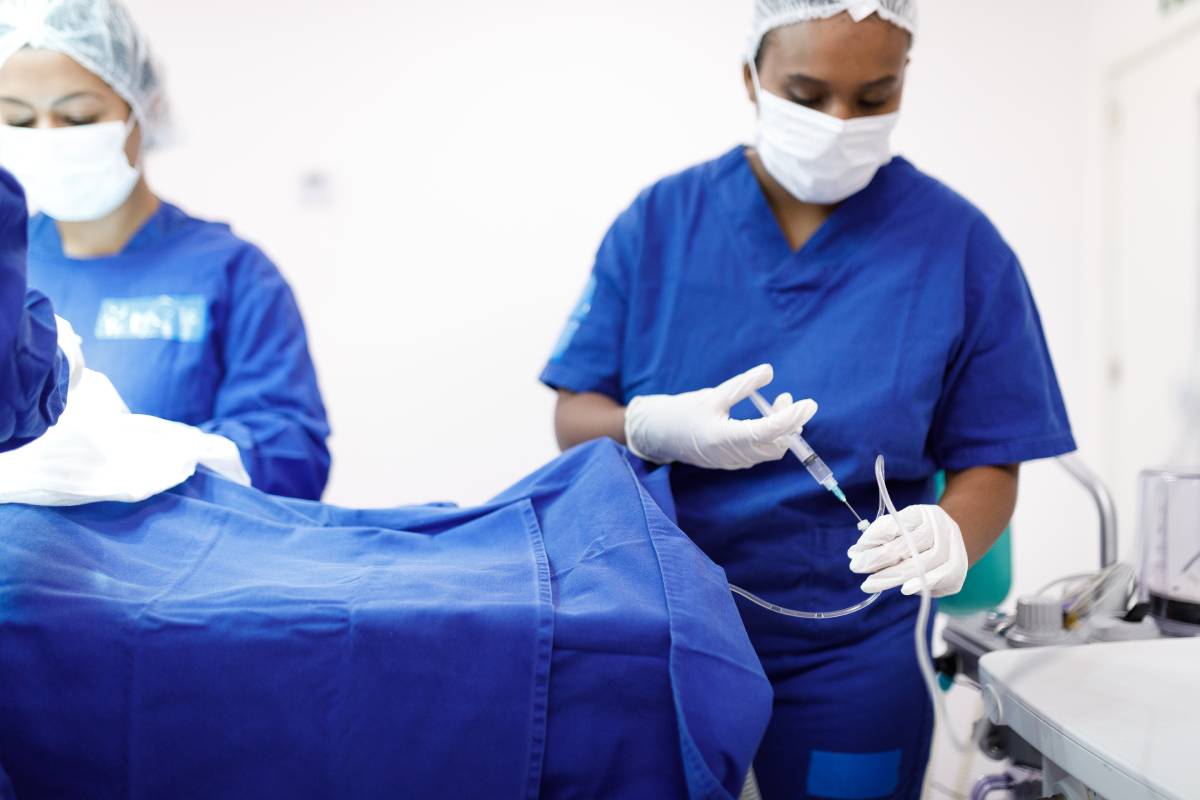Oral anticoagulants are extensively used for the prevention of thromboembolic events and stroke in various medical conditions, such as atrial fibrillation, mechanical heart valves, deep venous thrombosis, and pulmonary embolism, and for the prevention of venous thromboembolism in surgical patients. However, insufficient coagulation during surgery increases the risk of bleeding and associated adverse events. In such situations, anticoagulant reversal may be needed, making it a critical skill for anesthesia providers and surgeons.
The strategy for oral anticoagulant reversal during surgery depends on the type of drug, the location, and severity of bleeding, as well as the need for and type of invasive procedure. Reversal agents for oral anticoagulants include prothrombin complex concentrates (PCCs) and fresh frozen plasma (FFP) for nonspecific reversal.1 DOAC-specific reversal agents, such as andexanet alfa for apixaban and rivaroxaban, and idarucizumab for dabigatran, have been approved.2 Clinicians and surgeons must choose the safest and most efficient protocol according to the type of drug, its pharmacokinetic profile, and the patient’s medical history and clinical condition.
Warfarin, a vitamin K antagonist (VKA), has been in use for over 60 years and remains clinically significant. However, direct oral anticoagulants (DOACs) have emerged as an alternative to warfarin in recent years. DOACs offer direct, selective, and reversible inhibition of coagulation factors, while providing similar efficacy and a safer bleeding profile compared to warfarin. Despite the availability of DOACs, warfarin remains the most used anticoagulant due to global accessibility, cost, and lack of extensive studies on DOACs.3
Warfarin reversal is based on the clinical scenario and the evaluation of the international normalized ratio (INR). Reversal is accomplished with the administration of PCCs, preferably 4-factor PCC, and vitamin K. If PCCs are not available, FFP, 3-factor PCC, or activated PCC (aPCC) could also be used. Vitamin K is not a direct hemostatic agent but rather a cofactor for the activation of coagulation factors. PCCs are considered the treatment of choice for VKA reversal in emergency settings. Four-factor PCC is preferred over 3-factor PCC because it leads to a more significant reduction in the INR and has a higher survival rate. Recombinant activated factor VII (rFVIIa) should not be used as a single agent for warfarin reversal. However, it could be considered if no other options are available.4
Active charcoal could be useful by helping reduce the absorption of DOACs if the last dose was less than 2 hours before an emergency.5 For factor Xa inhibitors, such as rivaroxaban, apixaban, and edoxaban, andexanet alfa is the specific reversal agent currently on the market. If andexanet alfa is not available, 4-factor PCC or aPCC could be used as nonspecific reversal agents. For thrombin inhibitors like dabigatran, reversal is achieved with idarucizumab. If idarucizumab is not available, limited evidence supports the use of aPCC or PCC at 50 U.kg-1 (maximum dose 4000 units).
Emergency situations involving trauma, bleeding, and urgent surgery necessitate anticoagulant reversal. Reversal is achieved by administering hemoderivatives such as PCCs and FFP, and specific agents for DOACs. PCCs and vitamin K have the highest benefit-risk ratio for warfarin reversal in emergency settings, with the preferred choice being 4-factor PCC. Patients taking DOACs should receive specific reversal agents whenever available.6
Anticoagulant reversal during surgery is a critical aspect of perioperative care, particularly for patients taking oral anticoagulants. This article provides a concise narrative review focusing on the reversal of anticoagulants and recommends clinical algorithms for patients taking oral anticoagulants who require reversal therapy.
References
1. Thigpen JL, Limdi NA. Reversal of oral anticoagulation. Pharmacotherapy. 2013 Nov;33(11):1199-213. doi: 10.1002/phar.1270. Epub 2013 Apr 18. PMID: 23606318; PMCID: PMC3800206.
2. Almegren M. Reversal of direct oral anticoagulants. Vasc Health Risk Manag. 2017 Jul 19;13:287-292. doi: 10.2147/VHRM.S138890. PMID: 28769570; PMCID: PMC5529093.
3. Burn J, Pirmohamed M. Direct oral anticoagulants versus warfarin: is new always better than the old? Open Heart. 2018 Feb 7;5(1):e000712. doi: 10.1136/openhrt-2017-000712. Erratum in: Open Heart. 2018 Mar 1;5(1): PMID: 29531758; PMCID: PMC5845414.
4. Goldstein JN, Refaai MA, Milling TJ Jr, Lewis B, Goldberg-Alberts R, Hug BA, Sarode R. Four-factor prothrombin complex concentrate versus plasma for rapid vitamin K antagonist reversal in patients needing urgent surgical or invasive interventions: a phase 3b, open-label, non-inferiority, randomised trial. Lancet. 2015 May 23;385(9982):2077-87. doi: 10.1016/S0140-6736(14)61685-8. Epub 2015 Feb 27. PMID: 25728933; PMCID: PMC6633921.
5. Exner, Thomas, Ahuja, Monica and Ellwood, Lisa. “Effect of an activated charcoal product (DOAC Stop™) intended for extracting DOACs on various other APTT-prolonging anticoagulants” Clinical Chemistry and Laboratory Medicine (CCLM), vol. 57, no. 5, 2019, pp. 690-696. https://doi.org/10.1515/cclm-2018-0967
6. Schulman S, Ritchie B, Goy JK, Nahirniak S, Almutawa M, Ghanny S. Activated prothrombin complex concentrate for dabigatran-associated bleeding. Br J Haematol. 2014 Jan;164(2):308-10. doi: 10.1111/bjh.12620. Epub 2013 Oct 23. PMID: 24383848.
